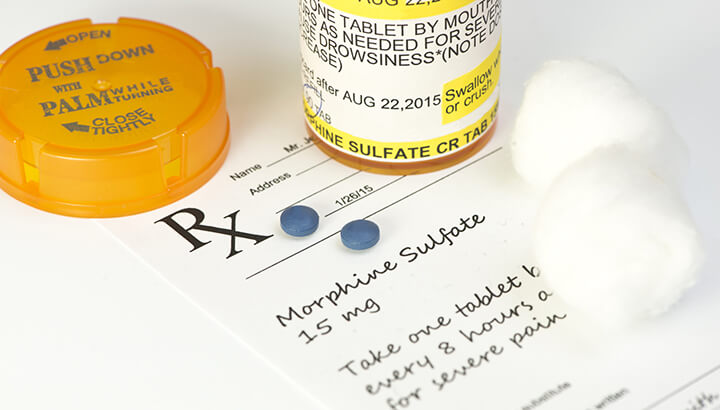
Many people are quick to dismiss the power of alternative therapies to cure pain and suffering, as is the case with acupuncture. But with science now saying otherwise, people may have to reevaluate their opinions.
An excellent case in point is a new study published in the American Journal of Emergency Medicine. The study, which was published in July of this year, compared acupuncture against morphine in the management of acute pain.
Researchers randomly selected 300 emergency departments and split them into two even groups. The first group was subjected to acupuncture in order to treat their acute pain, while the second group was given morphine.
The results were even better than researchers imagined. Patients who were treated with acupuncture experienced a whopping 92 percent reduction in their pain, while the morphine group experienced a 78 percent reduction. Not only that, the acupuncture group had a much faster pain recovery time. While the morphine group took an average of 28 minutes to recover from their pain, the acupuncture group recovered from their pain in an average of 16 minutes.
So, the alternative treatment was both more effective in reducing pain and faster. So what’s the catch? There doesn’t appear to be one! Not only did acupuncture blow the conventional medical treatment out of the water on those fronts, it also had fewer drawbacks. Of the one in three patients who experienced adverse side effects from the treatment, 57 percent of these were in the morphine group and just 2.6 percent were in the acupuncture group.
The study went on to suggest that acupuncture “should be considered, especially in today’s increasingly complicated and polymedicated patients, to avoid adverse drug reactions.” Let’s dig a little deeper and find out whether acupuncture really is the better choice for pain treatment in hospitals and ERs.
Morphine and common side effects

Morphine is an opioid (meaning opiate-based) medication used to treat moderate to severe pain. If you’ve ever had to go into the hospital for surgery, chances are you were placed on a strong dose of morphine post-op. After getting my tonsils out when I was 19, I was eased back into the world of the living with a blast of morphine, which left me feeling pretty whacky but largely devoid of pain.
While morphine is undoubtedly effective in alleviating pain, it’s potentially lethal side effects make it a very dangerous drug indeed. In 2014, more than 28,000 Americans died from opioid overdose, with 14,000 of those deaths involving prescription opioids. According to the California Department of Public Health, prescription opioids like morphine were only prescribed for relieving acute pain. Today, however, they’re increasingly being used to treat chronic pain, such as back pain or osteoarthritis. Aside from the addictive nature of morphine, this is putting many people at risk.
The United Kingdom is no better. This article is one of many which highlights the unprecedented number of deaths associated with morphine overdose or side effects under expert supervision in hospitals. The article indicated that three elderly patients in a Portsmouth hospital were killed due to a prescription of lethal doses of morphine, while two other patients in the same hospital died after being administered “suitable” doses of the drug.
More common side effects
When you look at the statistics around morphine, none of this should come as any real surprise. Side effects associated with this opiate are staggering. They are so numerous that I’ll only list a small fraction to give you some idea of just how risky morphine is:
- Abdominal pain
- Stomach pain
- Blurred vision
- Bulging soft spot on the head of an infant (I didn’t even know it was legal to prescribe morphine to babies!)
- Loss of color in vision
- Chest pain
- Confusion
- Coughing
- Reduced urination
- Dizziness
- Lightheadedness
- Fainting
- Irregular heartbeat
- Headaches
- Hives
- Rashes
- Itching
- Nausea
- Vomiting
- Nervousness
- Pounding in the ears
- Swelling of the eyelids, lips and tongue
- Severe constipation
- Shortness of breath
- Sweating or chills
- Loss of consciousness
- Painful urination
- Unusual bleeding or bruising
Wow. I for one will never be using morphine again. With such a horrifying list of potential side effects (and that’s certainly not all of them!), I almost think it’d be better to deal with the pain than put that into your body.
What is acupuncture?
Acupuncture is a popular traditional Chinese medicine where thin needles are lightly inserted into the surface of the skin. While it has probably been around for far longer, the first documented utilization of acupuncture dates back to around 100 BCE in ancient China.
Today, acupuncture is receiving something of a revival in the Western world. While many Asian cultures have consistently used acupuncture throughout the past 2,000 or more years, acupuncture was quickly pushed aside in Western cultures with the rise of modern medicine. People began to cast off such traditional treatments in favor of “more effective” aggressively-endorsed medical drugs.
But with an increasing body of evidence showing the dangers and drawbacks of using prescription drugs to treat anything from back pain to migraine headaches, many people are beginning to see the merit in less invasive traditional methods. Acupuncture is now commonly sought out for pain relief, lower back pain, shoulder stiffness and knee problems. Some American physicians prescribe acupuncture treatment in conjunction with conventional medical treatments for improved recovery.
How acupuncture works

Theories as to how acupuncture actually works vary considerably. One major school of thought is that acupuncture operates via neurohormonal pathways. Needles are placed on specific points of the body in order to stimulate certain nerves. These nerves send signals to the brain, which then releases neural hormones such as beta-endorphins. This contributes to feelings of happiness and alleviation of stress, which reduces the pain a patient is feeling.
Another hypothesis is that acupuncture reduces pro-inflammatory markers in the body. Certain studies suggest that acupuncture results in a significant reduction in pro-inflammatory proteins in the body, which decreases inflammation and alleviates pain.
Whatever the reason, the potential side effects of acupuncture are considerably less scary than those of morphine. Listed “side effects” of acupuncture are limited to:
- Soreness
- Organ injury
- Infection
Some people may experience soreness after acupuncture for the first time, but that soreness is from most accounts almost unnoticeable. Both organ injury and infection can occur if the acupuncture practitioner pushes in the needles too deep or doesn’t use new needles each time, respectively. But because the acupuncture practitioners in the United States are closely monitored, this is unlikely to happen.
More acupuncture studies
Aside from the study referenced earlier in this article, there is a huge range of scientific literature validating the claims that acupuncture can alleviate pain. Here are just a few passages from those studies, chosen at random:
- “Acupuncture has an intrinsic analgesic (pain relieving) effect in the clinical treatment of tennis elbow pain.” – Journal of Rheumatology, 1993
- “Several Cochrane reviews of acupuncture for a wide range of pain conditions have recently been published. All of these reviews were of high quality. Their results suggest that acupuncture is effective for some but not all types of pain.” – Chinese Journal of Integrative Medicine, 2011
- “Acupuncture was superior to conventional physical therapy (with regards to chronic back and neck pain).” – Acupuncture and Electro-Therapeutics Research, 1978
- “Acupuncture is effective for the treatment of chronic pain and is, therefore, a reasonable referral option.” – Archives of Internal Medicine, 2012
As with everything, keep an open mind and why not give it a go? You might be surprised by the results!
— Liivi Hess
Struggling with weight problems? Find out why acupuncture might just be that miracle you’ve been hoping for!

